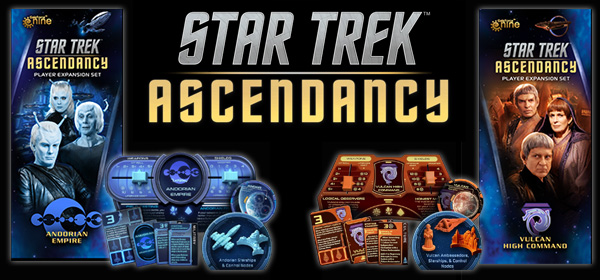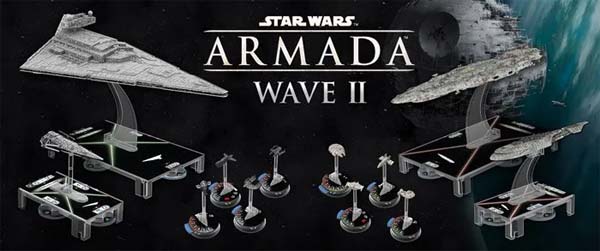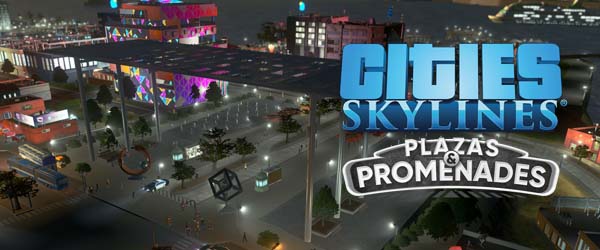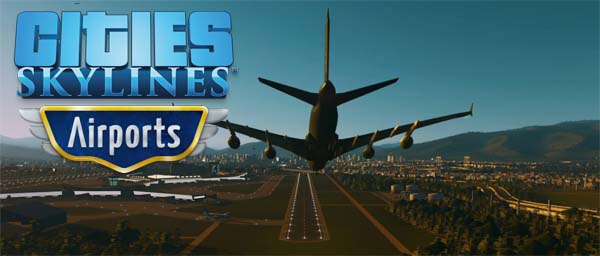
Star Trek: Ascendancy must be a more popular game than I thought. Usually I think of Star Trek games as being pretty niche and unlikely to find widespread success. But Ascendancy must be doing well because 8 years later, Gale Force 9 is still pumping out expansion packs and new accessories. Ascendancy deserves it. It's a fantastic game! In fact, it might very well be my favorite tabletop game at the moment.
The Vulcan and Andorian expansions were both released a few years ago, in 2019. But I couldn't review them near their release because I hadn't had an opportunity to play either of them until this past year or so. That's partly due to the fact that Gale Force 9's distribution isn't the best. The expansions were delayed several times, and my pre-orders were also late arriving. By the time I finally had them both, schedules just weren't favorable for playing. I had an opportunity to play with either faction within a few months of purchasing them, but we ended up sticking with the Ferengi and Cardassians.
We expected to play again soon and break in the Andorian and Vulcan sets, but then COVID happened. Ascendancy wasn't the only victim, as several other games (including Bloodborne, Tapestry, and U-Boot) have also sat un-opened or un-played since the summer of 2019.
Several games (or expansions) have sat un-opened or un-played since 2019 and 2021 thanks to COVID.
Now, GF9 has released another pair of expansions in 2022, with the Dominion War and Breen. This time, I didn't want to wait and risk letting them sit un-played for another 2 or 3 years, so we made sure to find time to play. Though reviews were still very late because I had 4 expansions to play and review instead of just 2. Which means it took quite a few play sessions to play everything and get a decent feel for it all.
It certainly helped that I introduced the game to some new players in the year or 2 following COVID, and they all loved it. I've now played with all the new factions and have impressions on all of them. I'll discuss the Dominion in a separate post, since the Dominion is a lot more complicated than simply being a new faction. It includes new rules for the Bajoran wormhole, Gamma Quadrant systems, and also includes a team variant game mode based on the Dominion War of Deep Space Nine. So for now, I'm going to cover the Andorians, Vulcans, and Breen.
Pre-Federation factions
The pair of 2019 expansions were both themed around Star Trek: Enterprise, offering versions of Federation-member cultures that represent their pre-Federation empires. I have to say, I was very surprised to see these factions be announced. Partly because they are both members of the Federation, and so don't seem like "big enough" galactic powers to warrant their own factions. To me, it seemed comparable to seeing the Virginia Commonwealth or Republic of Texas show up as a playable civilization in Sid Meier's Civilization.
But it was also a confounding release because I was expecting to see the Tholian faction that was promised by the base game's "Crystalline Entity" exploration card. I would have expected to see factions like the Dominion, Tholian, Gorn, or maybe even a Delta Quadrant faction like the Hirogen or Kazon, before seeing the Vulcans and Andorians show up as factions. Nevertheless, both introduce novel new gameplay mechanics and concepts, and show the development team at Gale Force 9 is getting quite creative with its faction concepts. [More]
c8602238-1f38-43f7-b62e-db5a7d8d9a68|0|.0
Tags:Star Trek, Star Trek: Ascendancy, Gale Force Nine, board game, expansion, Vulcan, Andorian, Breen, Dominion, lie, ambassador, research, isolationist
A video retrospective of the last few years' of Cities: Skylines expansions and DLC is on YouTube.
I recently published a new video essay to my YouTube channel about the last few years' worth of expansions and DLC for Cities: Skylines. I will not transcribe the entire essay here, since most of what is in the essay has already been presented in my various reviews of the relevant expansions and DLC. This video features my impressions of the Campus, Sunset Harbor, Airports, Plazas & Promenades, and Hotels " Retreats expansions, as well as the World Tour DLCs (including the Financial Districts mini-DLC and content creator packs).
In summary, while most of these expansions were even more limited in scope than the earlier Cities: Skylines expansions, they started to show some signs that Colossal Order was starting to address some of my long-standing complaints and criticisms with the earlier expansions. Most notably, the newer expansions started to back-port new features and mechanics into the older expansions, such as adding new buildings if players have other expansions installed, or adding new mixed-use transit options that combine transit methods in the new expansions with transit options found in old expansions. It's a lot of subtle stuff, but it goes a long way towards making all the expansions feel more robust and homogenized.
In addition, the newer expansions and content creator packs started introducing assets that I had been asking for for a very long time. These include native parking lots and garages, sports parks such as baseball diamonds and football fields, and new sports stadiums. Sadly, we still don't have public beaches, water parks, or golf courses.
These subtle changes to the way that the expansions also expand other expansions has me very excited and optimistic that Cities: Skylines II will learn lessons from the original game's expansions' faults, and will offer much more robust and complete expansions. [More]
3d066878-8bea-4b2b-9fa2-9e1a9cfbe25f|0|.0
Tags:Cities: Skylines, Cities: Skylines 2, Colossal Order, Paradox Interactive, expansion, Cities: Skylines: Campus, Cities: Skylines: Sunset Harbor, Cities: Skylines: Airports, Cities: Skylines: Plazas and Promenades, Cities: Skylines: Hotels and Retreats, YouTube, Patreon

I might have been a bit unfair to X-Wing when I originally reviewed the Star Wars: Armada core set. I gave Armada a pretty glowing recommendation and praised it for giving the player more meaningful decisions and for fixing a handful of complaints that I had with X-Wing. But I kind of neglected the fact that the Armada core set has pretty much the same fundamental problem that stopped me from giving a similarly high grade to X-Wing: the limited content of the package.
X-Wing had three small ships, and a handful of alternate pilots and upgrades to add some replayability. But the game really needed some expansions to really come into its own. And I pointed that out in my review of X-Wing's core set, and docked its final score.
Don't get me wrong, Armada does offer more content in its core set than X-Wing did! It also has three ships, along with alternate ship cards and upgrades. But those three ships are different sizes and strengths, and there's ten fighter squadrons to go along with them. Armada's core set also includes the objective cards that helped to give that game more structured play, while X-Wing only had a couple of scenarios. So I still think that the Armada core set offers more value than the X-Wing core set.
However, I also knew that having a roster of expansion ships would improve the game, and I baked that assumption into my review for Armada. This may have been unfair to X-Wing, especially considering that the Armada core set has other problems that X-Wing doesn't have.
The core learning scenario doesn't do the game justice
It's been difficult for me to get friends into playing Armada. X-Wing has always seemed to be the more popular game. It took me a very long time to finally figure out why. During the past couple years of the COVID pandemic, it hasn't been viable to get together large groups for bigger board games, so I focused more on playing smaller, 2 and 3-player games to limit the number of people over at once. Games like X-Wing and Armada were ideal for that situation. In doing so, I tried a new technique for introducing friends to Armada that would hopefully get them up to speed faster, and which also seems to be much more successful than my earlier teaching attempts using the Learning Scenario.
Put simply: Armada's learning scenario is kind of crap. After teaching friends and co-workers to play the game through the learning scenario, their responses to the game has always been a resounding "meh". I then have to spend thirty minutes or an hour explaining [in vain] the merits of the full game to people who have already lost interest.
The learning scenario takes most of the strategic decisions away from the players.
The problem with the learning scenario is that it puts pre-configured fleets up against each other with no upgrade cards, no objectives, and no obstacles to navigate around. Without upgrades giving ships special abilities that can turn the tide of a game, and without objectives that give the players something to fight over, the early-game decisions of setting the starting queue of commands are really the only significant decisions in the entire game. Unfortunately, the learning scenario takes those decisions away from the players by recommending a default starting queue of commands! Once ships have been pointed at each other and met in the middle of the board, the last 3 or 4 turns of the learning game easily degrade into a passive process of drifting ahead and mindlessly rolling attack dice. Or the players forget to queue up a Navigate command, and the ships fly past each other in round 3, and spend the rest of the match trying to circle back around to get back in firing range.
Sid Meier, the designer of the original Civilization PC game has defined a game as "a series of interesting decisions". By that definition, the learning scenario of Star Wars Armada isn't even a game at all because all of the interesting decisions have already been made by the rule book before the players have taken a single turn. [More]
560a66ce-81de-4e24-8622-af57cd62681e|0|.0
Tags:Star Wars, Star Wars: Armada, Fantasy Flight, board game, miniatures game, expansion, capital ship, squadron, Imperial Raider, Star Destroyer, Interdictor, Home One, hyperspace, hyperdrive

Looks like we're back to seeing 2 Cities: Skylines expansions being released in the same calendar year. Airports released in January, and now in September, Plazas & Promenades hit digital storefronts. I wonder if this will continue now that most businesses (and presumably Colossal Order) are back to business as usual following the COVID pandemic? Or maybe Colossal Order is migrating towards releasing even smaller, more module micro-expansions such as the recently-released Financial Districts DLC (which I'll review later)? Or will we finally see an announcement on the rumored sequel to Cities: Skylines soon?
Based on previews, I was expecting this expansion to completely change the way that I build my cities by giving me more freedom to pack structures into compact spaces and to more seamlessly integrate parks with business districts, leisure and tourism districts, or neighborhoods. I immediately started thinking of multiple ways that I could potentially use these 2 ideas to create new city layouts and concepts. Unfortunately, I set my expectations too high, and pedestrian areas ended up not being quite as game-changing as I thought and hoped they might. The big problem is that Plazas & Promenades is just another iteration of the paintable area concept that has been the focus of almost every expansion since Parklife. Paintable areas is a good mechanic for things like parks and university campuses, but it can be extremely limiting for an application as broad as neighborhoods or entire districts.
Plazas & Promenades allows the construction of more walkable neighborhoods and districts.
Roads minus the cars
First and foremost is the simple fact that the new pedestrian roads look and act more like regular roads than like pedestrian paths. They are the same size as roads, being either 2 or 4 tiles wide, and are laid out almost exactly the same. None of these pedestrian roads are 1 tile wide. And, of course, the legacy pedestrian paths have not been updated to allow buildings to be zoned along them. The end result is that these "Pedestrian Zones" don't take up any less space, and aren't any more compact than any other district. Though, the high-density, "wall-to-wall" residential buildings do have the same capacity as the normal, high-density residential skyscrapers (20-26 households), despite being a fraction of the size. So I guess it's "more compact" vertically? More people being crammed into smaller spaces? If so, it doesn't seem to have any impact on the citizen's happiness or satisfaction ratings.
Using Pedestrian roads outside of Pedestrian Areas is a liability, since zoned buildings may build on them.
Even though pedestrian roads can be placed anywhere, buildings can only be placed or zoned along them if they are in a dedicated Pedestrian Area. So if I want to create a single walkway or alleyway and zone some homes or shops along it, I have to paint the entire area as a Pedestrian Area. Well, at least, that is the case if you want the buildings to be functional. The game actually will let the player zone and place buildings along pedestrian roads outside of pedestrian areas, but doing so will result in the building flashing a "Not in Pedestrian Zone" warning, and the building won't operate.
[More]
18d09944-68e9-4886-b7fb-12dd3b3e66a3|1|5.0
Tags:Cities: Skylines, Cities: Skylines: Plazas and Promenades, Colossal Order, Paradox Interactive, steam, PC, expansion, pedestrian, roads, plaza, promenade, park, seaside resorts, mid-century modern, beach, boardwalk

After releasing 2 full expansions every year since the launch of Cities: Skylines, expansions seemed to dry up after 2020. Sunset Harbor released in March of 2020, and there hasn't been any full expansion since then. I'm not sure if this is the result of Colossal Order shutting down its studio temporarily during the COVID-19 pandemic, or if they have just been busy working on a sequel. I had assumed that Cities: Skylines was done, and that Sunset Harbor would be the final expansion for the game. But that is not the case, as a new expansion was finally released at the end of January 2022.
The Airports expansion is yet another expansion pack using the area-painting mechanic that was introduced in the Parklife expansion in 2018, then re-used in Industries and Campus in the subsequent years. As such, I don't know that I really have much to say about Airports. A lot of the same compliments and criticisms that were already applied to Parklife, Industries, and Campus also apply here.
Campus, ironically, did not teach Colossal Order any lessons
The modular nature of the airport buildings, taxi paths, and runways provides quite a bit of customization. There are 3 styles of airports: a retro-style, a modern style, and an "ultra-modern" style. They are functionally the same, so don't fill different roles the way that different parks, industries, or university types did in their respective expansions. The airports are massive and expensive, but they can be shaped to fit into irregular spaces in or around your city. Unfortunately, there's not nearly as much expressiveness as what we were offered by Parklife.
Airports come in different styles, and are customizable (parking lots and garage are mod assets).
Of course, Airports suffers from the same problems that have plagued the previous expansions that used the leveled-areas concept.
A lot of the modular components are simply decorative and have no function other than to increase the area's abstract "attractiveness". In the case of airports, these include the various hangars, parked planes, and so forth. Even the air traffic control tower is a purely decorative object, rather than being necessary for the airport to work!
I've also never liked how the park areas (and now the airport areas) level up by increasing the total visitors, and industries level up based on the total goods produced. This is something that is easy to achieve by simply waiting in-game months or years for the number to go up, regardless of the size or quality of the park, industry, or airport. Because of that, it can be easy for an airport to jump out ahead in total visitors, such that the area can be leveled up immediately, and at any time, by simply placing new structures that bring the attractiveness up above the required threshold.
Airports level up based on the total passengers, which can be easily increased by simply waiting.
Instead, I wish these areas would level up based on the weekly visitors (or good produced, for industries), rather than the cumulative total. This is a much better metric of the capacity of a park, industry, or airport. This is one of the things that the Campus expansion did a bit better than the others, since the universities level up based on the current number of students and the number of research projects. The amount of students is capped by the size of the school, and the research projects are semi-randomly created based on the funding levels and access to research facilities.
Airports aren't like that. Leveling them up feels much simpler and requires less effort and management from the player. Airports also cannot de-level (like universities could) if you fail to maintain its attractiveness, and since total passenger count is something that can never decrease the way that a university's student attendance can decline -- or the way that weekly passenger count could potentially decrease. [More]
9d933baf-f859-49f8-9255-79e2379ce105|0|.0
Tags:Cities: Skylines, Cities: Skylines: Airports, Colossal Order, Paradox Interactive, steam, PC, expansion, airport, airplane, airline, hotel
|

| 12 | | | | | | | 60 | | 11 | | | | | | | 55 | | 10 | | | | | | | 50 | | 09 | | | | | | | 45 | | 08 | | | | | | | 40 | | 07 | | | | | | | 35 | | 06 | | | | | | | 30 | | 05 | | | | | | | 25 | | 04 | | | | | | | 20 | | 03 | | | | | | | 15 | | 02 | | | | | | | 10 | | 01 | | | | | | | 05 |
|